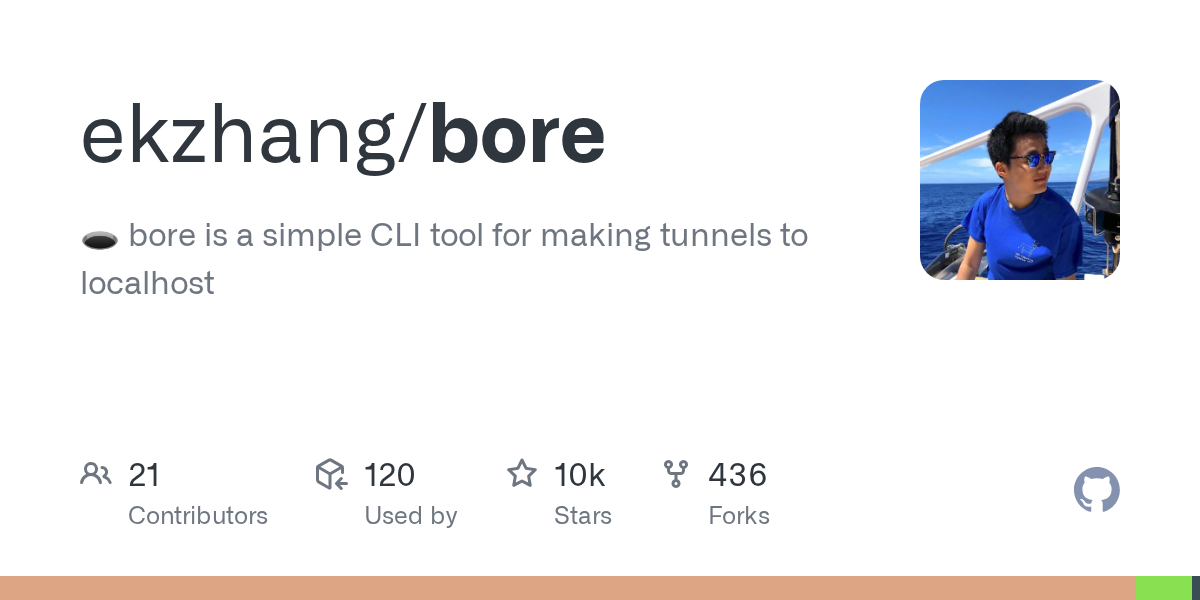Quote
“Hi everyone! It’s me again for another Kubeweken session! It’s been a while since I released the first Kubeweken session, and it has become a truly significant part of my journey – complicated, yet wonderfully rewarding.
I just want to express my sincere appreciation to everyone who has already supported me and continues to support this series.
Without further ado, let’s dive into Kubernetes! Specifically, we’ll be exploring how to operate a Kubernetes Sandbox within GitLab CI/CD for both CPU and GPU applications.”
How can make it happen ?
![]()
The story of mine
When tasked with building a cost-effective sandbox for application testing before moving to staging, I initially hit a roadblock. Without the resources for dedicated Kubernetes clusters like K3s or RKE2 to host workloads, it felt like an insurmountable challenge.
However, the idea of Kind (Kubernetes in Docker) immediately came to mind. Its excellent capability to run within Docker containers, combined with GitLab CI’s robust support for Docker-in-Docker (dind) for running multiple services, made Kind a shining star for getting started. My journey didn’t stop there; I found several articles, although older, that further proved Kind’s viability for operation within CI/CD pipelines. This discovery truly propelled me into this project.
For more information, consider checking these resources:
- Kind - Using KIND in CI
- Sysbee - Testing Kubernetes deployments with KIND
- KuberMatic - Running Kubernetes In The CI Pipeline For Integration & E2E Tests
Which things can helped ?
Now, I’m having Kind but any bloom together, it means this will become blackbox inside CI/CD which entire not resolve any problem but cause more trouble to debug and see what happen inside Kind. There are some issues need to answered before operating sandbox successfully
-
How can I monitor, debug and troubleshoot
podinside Kubernetes Sandbox ? I try to find solution, and it comes up some ideas. like- Using the pattern - Sidecar with Fluentbit to collect the log and expose it to
KafkaorElasticSearchfor data sourcing, that’s trust solution but coming with complex idea to operate them in Sandbox, I think that trade off is not deserve. If you want to explore more about FluentBit as Sidecar, You can try this Medium - Run fluent-bit as a sidecar to stream logs to Loki in EKS Fargate (Skipped ❌) - Second choice, I write backend server which interact with
Kubectlto scrape log, metrics and event in sandbox to email for example to let’s me know when are there failure in CI/CD pipelines. It great choice but one upon again it becomes complex and the workload spent for them will swallow much time to setup and implement. Hold on, you can try with MCP like Kagent and BotKube to support you turnkubectlto tool of MCP server and Client can use it to debug, but you need concern to the complexity of this solution (Skipped ❌) - The last one, shout out to Anh Phong - AI Engineer to help me turn this debug progress integrated inside environment as tools to debug Kubernetes remotely via
websocket, you know it comes from idea of Portainer and it truly work to streaming log when it open websocket to scrape log, events inside Kubernetes (Chosen 🌟)
- Using the pattern - Sidecar with Fluentbit to collect the log and expose it to
-
When the sandbox is already run, how can I access to them, e.g: API Docs or Interactive with application inside Kubernetes Sandbox. Technically, when i try to tradition environment, it will become easier for my hosted, because with GitLab CI, you dynamically run in many runner and it’s impossible to NAT your
podnetwork to handle randomly network of Kubernetes in Docker. But we have plan with Kubernetes Tunnelling, which can help resolve the accessible issue- First option, I try to use controller of Kubernetes and it truly exist multiple popular candidates, such as ngrok-operator, cloudflare-operator or inlets-operator which provide the great idea to control egress via ingress controller, like
ngrokprovide the tunnel to map yourpodin Kubernetes with domain of them. Here is article Ngrok - Introducing the ngrok Kubernetes Operator related more about that. But you know hard to say, when we have multiple application it doesn’t work more, I don’t tryinletsorcloudflarebut it required a couple pricing option, and know we hard to dynamically domain in CI/CD for couple of apps in same time (Skipped ❌) - But,
inletsarch give me idea to use middleware server, act like bastion host to tunneling HTTP server via them, I can combine it withkubectltoport-wardingapplication and open tunnel to bastion host server to tell it expose this local-port via them. I try and find couple of candidates actual great, e.g Bore or Chisel withClientandServerto expose network that entire resolve my concerning with secure expose
- First option, I try to use controller of Kubernetes and it truly exist multiple popular candidates, such as ngrok-operator, cloudflare-operator or inlets-operator which provide the great idea to control egress via ingress controller, like
We’ve resolved two significant questions, confirming that a dynamic Kubernetes environment can serve as a CI/CD sandbox for temporary use, releasing resources after testing to push to staging.
While I cannot disclose proprietary company tools, with permission from Anh Phong - AI Engineer, I can outline the use case capabilities of our sandbox-cli. You can develop a similar tool independently before his official publication.
Its features include:
- Built on Python, it uses WebSockets to stream logs and metrics from the client (sandbox) to a server.
- It interacts with
boreandkubectlto retrieve logs, manage port-forwarding, and expose sandbox events to the server. - It visualizes data in a user-friendly WebUI for effective monitoring, debugging, and interactive testing, enabling the release of the Kind cluster
GPU Option for Kind

Because our business focuses on specific AI Model applications and serving them on GPUs, standard Kind doesn’t meet our needs. After researching, we found that NVIDIA has indeed addressed this with NVKind, a wrapper around Kind specifically designed for GPU serving.
NVKind integrates crucial libraries to enable interaction with GPUs. It leverages the device-plugin within Kind to expose GPU resources and utilizes nvidia-container-toolkit to bridge the gap for container access to these devices. For a deeper understanding, I highly recommend reviewing its GitHub repository and the article: ‘Tutorial: Set Up a Cloud Native GPU Testbed With Nvkind Kubernetes’ on The New Stack
More repositories and discussion around this topics at
- GitHub - nvidia-kind-deploy
- Reddit - Minikube versus Kind: GPU Support
- Youtube - Kind + GPU: A Local K8s cluster that can run GPU pods
Make it happen

For resolve and cut of the complex when we put a lot of command in CI/CD to setup, we need split this sandbox to small piece to easier for control quality and also easier to connect them to consistent system via couple of steps
- Build Base Docker Image for Kind CPU and Kind GPU
- Deploy Bore Service for Tunneling HTTP
- Deploy Sandbox Tools as CLI with Server and WebUI (Not more information)
- Implement and operate GitLab CI/CD with Kind Image
Build The Base Docker Image
First of all, we need to build the docker image for reducing the complex when we operate them in GitLab CI, including
- Setup requirement package like
curl,wget,jq,gitandlibnvidia-ml-dev(GPU Only) - Setup binaries tools like
kubectl,helm,kindandnvkind(GPU Only) - Setup Golang language and Docker for GPU Sandbox
- Script as tool for
get-secretsandget-metrics - Setup
bore-cliandsandbox-clifor monitoring and tunneling
You can pull these image from my dockerhub
# CPU
docker pull xeusnguyen/cpu-kind-sandbox:v0.1.0
docker pull xeusnguyen/cpu-kind-sandbox # same but latest tag
# GPU
docker pull xeusnguyen/gpu-kind-sandbox:v0.1.0
docker pull xeusnguyen/gpu-kind-sandbox # same but latest tagWarning
When I try to test with GPU Image in GPU Server (A4000), I figure out you should use a new driver for make NVKind and your GPU can able to interact with other, e.g: 535, 555, 575 (NOTE: I try to use P40 with 525 and it doesn’t work)
You can try to modify the resource below to get your own Docker Image with structure like this
sandbox
├── cpu.Dockerfile
├── gpu.Dockerfile
├── Makefile
├── README.md
└── scripts
├── get-metrics
└── get-secretsFROM docker:20.10.22
# Definition Environment Variable
ARG KIND_VERSION
ARG KUBECTL_VERSION
ENV KIND_VERSION=$KIND_VERSION
ENV KUBECTL_VERSION=$KUBECTL_VERSION
# Download and setup prerequiste packages for sandbox
# Setup the standard packages
RUN apk add -U wget curl jq git python3 py3-pip
# Setup Kind, Kubectl and Helm
RUN wget -O /usr/local/bin/kind \
https://github.com/kubernetes-sigs/kind/releases/download/${KIND_VERSION}/kind-linux-amd64 && \
chmod +x /usr/local/bin/kind
RUN wget -O /usr/local/bin/kubectl \
https://storage.googleapis.com/kubernetes-release/release/${KUBECTL_VERSION}/bin/linux/amd64/kubectl && \
chmod +x /usr/local/bin/kubectl
RUN export VERIFY_CHECKSUM=false && \
curl https://raw.githubusercontent.com/helm/helm/main/scripts/get-helm-3 | sh
# Setup the tools to interactive with Kubectl and Vault
COPY ./scripts/get-metrics /usr/local/bin/get-metrics
COPY ./scripts/get-secrets /usr/local/bin/get-secrets
# Setup the bore-cli for tunneling
RUN wget -O /tmp/bore.tar.gz \
https://github.com/ekzhang/bore/releases/download/v0.6.0/bore-v0.6.0-x86_64-unknown-linux-musl.tar.gz && \
tar -xzf /tmp/bore.tar.gz -C /usr/local/bin && \
rm -rf /tmp/bore.tar.gzFROM ubuntu:22.04
# Definition Environment Variable
ARG DOCKER_VERSION
ARG KIND_VERSION
ARG KUBECTL_VERSION
ARG GO_VERSION
ENV KIND_VERSION=$KIND_VERSION
ENV KUBECTL_VERSION=$KUBECTL_VERSION
ENV DOCKER_VERSION=$DOCKER_VERSION
ENV GO_VERSION=$GO_VERSION
# Download and setup prerequiste packages for sandbox
# Setup the standard packages
RUN apt update && apt install -y wget curl jq git \
python3 python3-pip \
build-essential pkg-config \
libnvidia-ml-dev
# Setup Docker command
RUN wget -O docker-$DOCKER_VERSION.tgz \
https://download.docker.com/linux/static/stable/"$(uname -m)"/docker-$DOCKER_VERSION.tgz && \
tar -xzf docker-$DOCKER_VERSION.tgz -C /usr/local/bin/ --strip-components 1 && \
rm -rf docker-$DOCKER_VERSION.tgz
# Setup and configure Go
RUN wget -O go$GO_VERSION.linux-amd64.tar.gz \
https://go.dev/dl/go$GO_VERSION.linux-amd64.tar.gz && \
tar -xzf go$GO_VERSION.linux-amd64.tar.gz -C /usr/local && \
rm -rf go$GO_VERSION.linux-amd64.tar.gz
ENV GOROOT /usr/local/go
ENV GOPATH /go
ENV PATH /go/bin:/usr/local/go/bin:$PATH
RUN mkdir -p ${GOPATH}/src ${GOPATH}/bin
# Setup Kind, NVKind, Kubectl and Helm
RUN wget -O /usr/local/bin/kind \
https://github.com/kubernetes-sigs/kind/releases/download/${KIND_VERSION}/kind-linux-amd64 && \
chmod +x /usr/local/bin/kind
RUN go install github.com/NVIDIA/nvkind/cmd/nvkind@latest
RUN wget -O /usr/local/bin/kubectl \
https://storage.googleapis.com/kubernetes-release/release/${KUBECTL_VERSION}/bin/linux/amd64/kubectl && \
chmod +x /usr/local/bin/kubectl
RUN export VERIFY_CHECKSUM=false && \
curl https://raw.githubusercontent.com/helm/helm/main/scripts/get-helm-3 | bash
# Setup the tools to interactive with Kubectl and Vault
COPY ./scripts/get-metrics /usr/local/bin/get-metrics
COPY ./scripts/get-secrets /usr/local/bin/get-secrets
# Setup the bore-cli for tunneling
RUN wget -O /tmp/bore.tar.gz \
https://github.com/ekzhang/bore/releases/download/v0.6.0/bore-v0.6.0-x86_64-unknown-linux-musl.tar.gz && \
tar -xzf /tmp/bore.tar.gz -C /usr/local/bin && \
rm -rf /tmp/bore.tar.gz#!/bin/sh
# ==============================================================================
# Vault Secret CLI Tool
# This script securely fetches secrets from a HashiCorp Vault instance using
# command-line arguments and populates a local .env file.
#
# Usage:
# ./get-secrets.sh --vault-addr <addr> --secret-path <path> --env-file <file> --token <token>
# ./get-secrets.sh --vault-addr <addr> --secret-path <path> --env-file <file> --username <user> --password <pass>
#
# Prerequisites:
# - `curl` and `jq` must be installed on your system.
# ==============================================================================
# Exit immediately if a command exits with a non-zero status.
set -e
# Exit if any variable is unset.
set -u
# --- Configuration & Utility Functions ---
# Function to print messages to the console.
# $1: The message to print.
print_message() {
echo ""
echo ">>> $*"
}
# Function to check for required dependencies.
check_dependencies() {
for cmd in "curl" "jq"; do
if ! command -v "$cmd" > /dev/null 2>&1; then
echo "Error: Required command '$cmd' is not installed." >&2
exit 1
fi
done
}
# Function to display usage information.
usage() {
echo "Usage: $0 [options]"
echo " -a, --vault-addr <addr> Vault server address (e.g., http://127.0.0.1:8200)"
echo " -s, --secret-path <path> Path to the secret in Vault (e.g., secret/data/my-app/config)"
echo " -e, --env-file <file> Name for the output .env file (e.g., .env)"
echo " -u, --username <user> Username for userpass authentication"
echo " -p, --password <pass> Password for userpass authentication"
echo " -t, --token <token> Vault token for direct access"
echo " -h, --help Display this help message"
exit 1
}
# --- Main Script Logic ---
check_dependencies
# Initialize variables
VAULT_ADDR=""
SECRET_PATH=""
ENV_FILE=""
VAULT_USERNAME=""
VAULT_PASSWORD=""
VAULT_TOKEN=""
# Parse command-line arguments
while [ "$#" -gt 0 ]; do
case "$1" in
-a|--vault-addr)
VAULT_ADDR="$2"
shift
;;
-s|--secret-path)
SECRET_PATH="$2"
shift
;;
-e|--env-file)
ENV_FILE="$2"
shift
;;
-u|--username)
VAULT_USERNAME="$2"
shift
;;
-p|--password)
VAULT_PASSWORD="$2"
shift
;;
-t|--token)
VAULT_TOKEN="$2"
shift
;;
-h|--help)
usage
;;
-*) # Unknown option
echo "Error: Unknown option $1" >&2
usage
;;
*) # Positional arguments
;;
esac
shift
done
# Validate required arguments
if [ -z "$VAULT_ADDR" ] || [ -z "$SECRET_PATH" ] || [ -z "$ENV_FILE" ]; then
echo "Error: Missing required arguments. --vault-addr, --secret-path, and --env-file are mandatory." >&2
usage
fi
# Authenticate and get the token
if [ -n "$VAULT_TOKEN" ]; then
print_message "Using provided token for access."
elif [ -n "$VAULT_USERNAME" ] && [ -n "$VAULT_PASSWORD" ]; then
print_message "Authenticating with userpass..."
AUTH_RESPONSE=$(curl -s --request POST \
--data "{\"password\": \"$VAULT_PASSWORD\"}" \
"$VAULT_ADDR/v1/auth/userpass/login/$VAULT_USERNAME")
# Extract the token using jq
if echo "$AUTH_RESPONSE" | jq -e '.auth.client_token' >/dev/null; then
VAULT_TOKEN=$(echo "$AUTH_RESPONSE" | jq -r '.auth.client_token')
print_message "Authentication successful. Token received."
else
echo "Error: Failed to authenticate with userpass. Check your credentials." >&2
echo "Vault response: $AUTH_RESPONSE" >&2
exit 1
fi
else
echo "Error: No authentication method specified. Please provide a token or a username/password." >&2
usage
fi
# 3. Fetch the secrets from Vault
print_message "Fetching secrets from '$SECRET_PATH'..."
SECRET_RESPONSE=$(curl -s --header "X-Vault-Token: $VAULT_TOKEN" \
"$VAULT_ADDR/v1/$SECRET_PATH")
# 4. Parse and write secrets to the .env file
if echo "$SECRET_RESPONSE" | jq -e '.data.data' >/dev/null; then
# Extract the secrets data from the response using jq
SECRET_DATA=$(echo "$SECRET_RESPONSE" | jq '.data.data')
# Clear the .env file if it exists, otherwise create it
echo "" > "$ENV_FILE"
# Iterate over the keys and values, formatting them for the .env file
print_message "Parsing secrets and writing to '$ENV_FILE'..."
echo "$SECRET_DATA" | jq -r 'to_entries[] | "export \(.key)=\"\(.value)\""' >> "$ENV_FILE"
print_message "Secrets successfully written to '$ENV_FILE'."
echo "You can now source the file with: source $ENV_FILE"
else
echo "Error: Failed to fetch secrets from path '$SECRET_PATH'. Check the path and token permissions." >&2
echo "Vault response: $SECRET_RESPONSE" >&2
exit 1
fi#!/bin/sh
# k8s-pod-info: A CLI tool to get Kubernetes pod CPU/Memory usage, requests, and limits.
# Designed for POSIX-compliant shells (like /bin/sh).
# --- Configuration ---
POD_NAME=""
NAMESPACE=""
# --- Functions ---
# Function to display usage information
usage() {
echo "Usage: $0 [OPTIONS]"
echo "Get Kubernetes pod CPU/Memory usage, requests, and limits."
echo
echo "Options:"
echo " -p, --pod-name <name> Name of the Kubernetes pod to query (required)."
echo " -n, --namespace <name> Namespace where the pod is located (required)."
echo " -h, --help Display this help message and exit."
echo
echo "Examples:"
echo " $0 --pod-name my-app-pod-abc --namespace default"
echo " $0 -p another-pod-xyz -n kube-system"
echo " $0 -p some-metrics-pod -n kube-system | jq ."
echo
exit 0
}
# --- Argument Parsing ---
# Loop until all arguments are processed
while [ "$#" -gt 0 ]; do
case "$1" in
-p|--pod-name)
# Check if value is missing
if [ -z "$2" ]; then
echo "Error: --pod-name requires a non-empty argument." >&2
usage
fi
# Check if value is another option (starts with hyphen)
case "$2" in
-*)
echo "Error: --pod-name requires a value, but '$2' looks like another option." >&2
usage
;;
esac
POD_NAME="$2"
shift # consume option
;;
-n|--namespace)
# Check if value is missing
if [ -z "$2" ]; then
echo "Error: --namespace requires a non-empty argument." >&2
usage
fi
# Check if value is another option (starts with hyphen)
case "$2" in
-*)
echo "Error: --namespace requires a value, but '$2' looks like another option." >&2
usage
;;
esac
NAMESPACE="$2"
shift # consume option
;;
-h|--help)
usage
;;
-*)
echo "Error: Unknown option '$1'" >&2
usage
;;
*) # Positional arguments (not expected if using flags)
echo "Error: Unexpected positional argument '$1'" >&2
usage
;;
esac
shift # consume argument (either the option or the option's value)
done
# --- Validate Required Arguments ---
if [ -z "$POD_NAME" ] || [ -z "$NAMESPACE" ]; then
echo "Error: Both --pod-name and --namespace are required." >&2
usage
fi
# --- Main Logic ---
# 1. Get CPU and Memory usage for the specific pod
# We use try-catch to handle cases where the pod might not be "top"-able yet or data isn't available
POD_USAGE_JSON=$(kubectl top pod "$POD_NAME" --namespace "$NAMESPACE" --no-headers 2>/dev/null | \
awk '{print "{\"pod\":\""$1"\", \"cpu_usage\":\""$2"\", \"memory_usage\":\""$3"\"}"}' | \
jq -s .)
# Check if usage data was found
if [ "$(echo "$POD_USAGE_JSON" | jq 'length')" -eq 0 ]; then
echo "Warning: Could not get usage data for pod '$POD_NAME' in namespace '$NAMESPACE'. It might not be running, or metrics are not available." >&2 # Send warning to stderr
# Provide a default structure with nulls for usage if data is missing
POD_USAGE_JSON='[{"pod":"'"$POD_NAME"'","cpu_usage":null,"memory_usage":null}]'
fi
# 2. Get CPU and Memory requests/limits for the specific pod
# We need to loop through containers because requests/limits are per-container.
POD_RESOURCES_JSON=$(kubectl get pod "$POD_NAME" --namespace "$NAMESPACE" -o json | jq -c '
. as $pod | {
pod: $pod.metadata.name,
namespace: .metadata.namespace, # Fix: Use .metadata.namespace directly
containers: [
.spec.containers[] | {
name: .name,
cpu_request: (.resources.requests.cpu // "0m"),
cpu_limit: (.resources.limits.cpu // "0m"),
memory_request: (.resources.requests.memory // "0Mi"),
memory_limit: (.resources.limits.memory // "0Mi")
}
]
}' | jq -s .)
# 3. Combine and process the data with jq
jq -n \
--argjson pod_usage "$POD_USAGE_JSON" \
--argjson pod_resources "$POD_RESOURCES_JSON" \
'
($pod_usage[0]) as $usage_data |
($pod_resources[0]) as $resource_data |
($resource_data.containers | reduce .[] as $c (
{cpu_req: 0, cpu_limit: 0, mem_req: 0, mem_limit: 0};
.cpu_req += ($c.cpu_request | gsub("m";"") | tonumber? // 0) |
.cpu_limit += ($c.cpu_limit | gsub("m";"") | tonumber? // 0) |
.mem_req += ($c.memory_request | gsub("Mi";"") | tonumber? // 0) |
.mem_limit += ($c.memory_limit | gsub("Mi";"") | tonumber? // 0)
)) as $totals |
{
pod: $usage_data.pod,
cpu_usage: $usage_data.cpu_usage,
memory_usage: $usage_data.memory_usage,
cpu_request: ($totals.cpu_req | tostring + "m"),
cpu_limit: ($totals.cpu_limit | tostring + "m"),
memory_request: ($totals.mem_req | tostring + "Mi"),
memory_limit: ($totals.mem_limit | tostring + "Mi")
}
'Now you already to build your docker image with command
# For CPU Sandbox
docker buildx build -t cpu-kind-sandbox \
-f cpu.Dockerfile \
--build-arg KIND_VERSION=v0.29.0 \
--build-arg KUBECTL_VERSION=v1.27.0 .
# For GPU Sandbox
docker buildx build -t gpu-kind-sandbox \
-f gpu.Dockerfile \
--build-arg KIND_VERSION=v0.29.0 \
--build-arg KUBECTL_VERSION=v1.27.0 \
--build-arg DOCKER_VERSION=20.10.22 \
--build-arg GO_VERSION=1.23.0 .Setup Bore Server

To enable tunneling, we will adapt the Bore tool, leveraging its self-hosted client-server capabilities. For simplified setup, Docker images are preferred for self-hosting at this time.
You will need a server configured to open specific ports for tunneling and management:
- 3000 - 3005: Port range dedicated for tunneling.
- 7835: An implicit control port for establishing new connections on demand.
First, you need to configure your cloud provider’s firewall, NACL, or Security Group to enable accessibility for the Bore Client on the specified ports.
Next, install Docker and set up the Bore server using the following command:
sudo docker run -d --name bore-server \
-p 7835:7835 -p 3000-3005:3000-3005 \
-e BORE_MIN_PORT=3000 \
-e BORE_MAX_PORT=3005 \
-e BORE_SECRET=<your-secret-for-secure-connection> \
ekzhang/bore serverAfter that, you will able to connect from other bore client to server with command, but you can try to use docker command to testing
sudo docker run -it --rm \
--network host ekzhang/bore \
local 80 --to <your-bore-server-address> --secret <your-secret-for-secure-connection>Access the browser with result tunnel command, and you can see your application exposed in that IP address
Implement and operate GitLab CI/CD with Kind Image

For license reasons, I cannot display the actual appearance of the Sandbox CLI, Server, and WebUI. However, based on the features described, it is an excellent tool that allows developers to debug directly within the Kubernetes Sandbox in CI, you can imagine portainer does things and SandboxCLI does same way.

Let’s draft the .gitlab-ci.yml following the image above, it won’t to show you all technique inside pipeline, but we only focus on sandbox-ci, which create magic in this pipelines
We should define kind-config.yaml to let bootstrap for sandbox cluster
apiVersion: kind.x-k8s.io/v1alpha4
kind: Cluster
networking:
apiServerAddress: "0.0.0.0"
kubeadmConfigPatchesJSON6902:
- group: kubeadm.k8s.io
version: v1beta3
kind: ClusterConfiguration
patch: |
- op: add
path: /apiServer/certSANs/-
value: docker
nodes:
- role: control-planeNote
As you can see, I used
kubeadmConfigPatchesJSON6902to patch thekubeadmClusterConfiguration, which modifies the network to enable connectivity to the Kind cluster’s services from within the CI pipeline. Read more about example at GitHub - kind-example-config.yaml
Now we will implement .gitlab-ci.yml but I will spend for CPU first and GPU is in progressed, therefore, I will add into this article next week
image: xeusnguyen/cpu-kind-sandbox:v0.1.0
services:
- name: docker:20.10.22-dind
alias: docker
stages:
- sandbox
sandbox:
stage: sandbox
script:
# Login to Private Container Registry
- docker login -u "$REGISTRY_USER" -p "$REGISTRY_PASSWORD" "$REGISTRY_LOCATION"
# Setup Kind Kubernetes Sandbox
- kind delete clusters --all || echo "Non't exist any cluster"
- kind create cluster
--name=sandbox-$CI_COMMIT_SHORT_SHA
--image="kindest/node:v1.27.11"
--config=./kubernetes/kind-config.yaml --wait=60s
- sed -i -E -e 's/localhost|0\.0\.0\.0/docker/g' "$HOME/.kube/config"
- kubectl wait --for=condition=Ready nodes/nlp-sandbox-$CI_COMMIT_SHORT_SHA-control-plane --timeout=120s
- kubectl get nodes -o wide
- kubectl get pods --all-namespaces -o wide
- kubectl get services --all-namespaces -o wide
# Setup secret registry-cred for private container registry
- kubectl create secret generic registry-cred
--from-file=.dockerconfigjson=$HOME/.docker/config.json --type=kubernetes.io/dockerconfigjson
# Setup metrics server
- helm repo add metrics-server https://kubernetes-sigs.github.io/metrics-server/
- helm install metrics-server metrics-server/metrics-server --set "args={--kubelet-insecure-tls=true}" --wait
- kubectl get pods --all-namespaces -o wide
# # Setup Ngrok for Kubernetes Tunnel
# - helm repo add ngrok https://charts.ngrok.com
# - helm repo update
# - helm install ngrok-operator ngrok/ngrok-operator
# --version=0.19.0 --namespace ngrok-operator --create-namespace
# --set credentials.apiKey=$NGROK_API_KEY --set credentials.authtoken=$NGROK_AUTHTOKEN --wait
# - kubectl get pods --all-namespaces -o wide
# Setup your own Application
# Use get-secret to access vault (options)
# - get-secrets
# --vault-addr $VAULT_ADDRESS
# --secret-path $SECRET_PATH
# --username $USERNAME
# --password $PASSWORD
# --env-file /tmp/config.env
# Deploy your application via helm
- helm repo add kubewekend https://kubewekend.xeusnguyen.xyz/kubernetes/charts
- helm repo update
- helm install todo-app kubewekend/common
-f values.yaml
--set image.repository="xeusnguyen/application"
--set image.tag="v0.0.1"
--set service.port="3000"
--wait
- kubectl get pods --all-namespaces -o wide
# Use Sandbox CLI
sandbox-cli command
after_script:
- echo "Signal ending from websocket, you are testing sandbox successfully, now we can release the cluster of this CI"
- kind delete cluster --name=sandbox-$CI_COMMIT_SHORT_SHAA couple result of pipeline and when we operate successfully


More advanced with GitLab CI (Updated 09/2025)

As usual, I use sandbox for testing lowest environment in CI before pushing them into higher environment, e.g: staging or prod. So why for more dynamically, you can turn this CI into the template and let’s define all of them into one and inherit by another with overwrite via environment variables or CI/CD variables
First, we go to define the template in remote repository
# Template 1: Using for build/push sandbox image
# NOTE: You can build only and pass them via artifact, it will be flexible
# to let you define what logical you actual want
.build-sandbox-image:
stage: build
image: docker:20.10.22
services:
- name: docker:20.10.22-dind
alias: docker
variables:
# Define what environment in tagging (option) image, but it's up to you
# to choose whatever you want
ENV_NAME: sandbox
# Disable the TLS Certificate in the situation you won't have it
# Documentation: https://docs.gitlab.com/ci/docker/using_docker_build/#docker-in-docker-with-tls-disabled-in-the-docker-executor
DOCKER_TLS_CERTDIR: ""
# The condition to trigger the pipeline, it actual imporant, if not, this template won't trigger
rules:
- if: $SANDBOX_ENABLED == "true" && $CI_COMMIT_REF_NAME == "$TARGET_BRANCH_TESTING_SANDBOX"
# There are before script to check your lint passed, failed or canceled
# because sometimes you want try to bypass `lint` so I prefer to handle in this template
# use with `after_script` technique with pre-define environment $CI_JOB_STATUS
before_script:
# Check the lint state for continue or break the pipeline
- echo "Checking lint status in before_script..."
- echo "LINT_STATE is $LINT_STATE"
- if [ "$LINT_STATE" = "canceled" ]; then
echo "Lint job was canceled. Proceeding normally .....";
elif [ "$LINT_STATE" = "failed" ]; then
echo "Lint job failed !!! ..... ";
exit 1;
else
echo "Lint job completed successfully. Proceeding normally .....";
fi
# Pass artifact when the job become successfully
artifacts:
when: on_success
reports:
dotenv: buildsandbox.env
# Template 2: Using for running sandbox as CPU type
.run-cpu-sandbox:
stage: sandbox
image: xeusnguyen/cpu-kind-sandbox:latest
services:
- name: docker:20.10.22-dind
alias: docker
before_script:
# Remove the cluster in timeout pipeline when they try again with same CI_COMMIT_SHORT_SHA
- kind delete cluster --name=nlp-sandbox-$CI_COMMIT_SHORT_SHA || echo "Non't exist any cluster with name nlp-sandbox-$CI_COMMIT_SHORT_SHA. Proceeding normally ....."
# These variables are what you should be cared to overwrite or keep default
# which define your sandbox information
variables:
# USE FOR RUNNER
DOCKER_TLS_CERTDIR: ""
# USE FOR SANDBOX CLUSTER
KIND_CLUSTER_NAME: "nlp-sandbox-$CI_COMMIT_SHORT_SHA"
SANDBOX_K8S_IMAGE: "kindest/node:v1.27.11"
# USE FOR SANDBOX APPLICATION
# About the helm-template, you can double check more option at
# https://wiki.xeusnguyen.xyz/Tech-Second-Brain/Containerization/Awesome-Kubernetes#operator--chart
# 1. Stakater Application Helm Chart: https://github.com/stakater/application
# 2. Bitami Helm Chart: https://github.com/bitnami/charts
# 3. Poly Helm Chart: https://github.com/haonguyen1915/helm-charts
SANDBOX_HELM_REPO: "kubewekend"
SANDBOX_HELM_REPO_URL: "https://kubewekend.xeusnguyen.xyz"
SANDBOX_HELM_CHART: "common"
SANDBOX_CHART_VERSION: "0.1.3"
SANDBOX_APP_NAME: "sandbox-kubewekend-todoapp"
SANDBOX_SERVICE_NAME: "$SANDBOX_APP_NAME"
SANDBOX_APP_PORT: "3000"
SANDBOX_APP_HEALTH_CHECK_PATH: "/"
SANDBOX_RUNTIME_ARG: "yarn run dev"
SANDBOX_FULLNAME_OVERRIDE: "kubewekend-todoapp"
SANDBOX_IMAGE_REGISTRY: "xeusnguyen/application"
# USE FOR VAULT SANDBOX APPLICATION
# Set up these configuration if you want to use and retrieve secret vault as dotenv file
# NOTE: (Only supported) Hashicorp Vault: https://www.hashicorp.com/en/products/vault
USE_VAULT: false
VAULT_ADDRESS: "http://127.0.0.1:8200"
SECRET_PATH: "secret/data/sandbox/config"
rules:
- if: $SANDBOX_ENABLED == "true" && $CI_COMMIT_REF_NAME == "$TARGET_BRANCH_TESTING_SANDBOX" && $SANDBOX_TYPE == "CPU"
script:
#--- Setup Environment ---
# Login to Private Container Registry
- docker login -u "$REGISTRY_USER" -p "$REGISTRY_PASSWORD" "$REGISTRY_LOCATION"
#--- Setup Kind Kubernetes Cluster ---
# Create and setup kind-config.yaml and kind cluster for sandbox
- mkdir -p ./kubernetes
- |
cat <<EOF | tee ./kubernetes/kind-config.yaml
apiVersion: kind.x-k8s.io/v1alpha4
kind: Cluster
networking:
apiServerAddress: "0.0.0.0"
kubeadmConfigPatchesJSON6902:
- group: kubeadm.k8s.io
version: v1beta3
kind: ClusterConfiguration
patch: |
- op: add
path: /apiServer/certSANs/-
value: docker
nodes:
- role: control-plane
EOF
- kind create cluster
--name=$KIND_CLUSTER_NAME
--image=$SANDBOX_K8S_IMAGE
--config=./kubernetes/kind-config.yaml --wait=60s
- sed -i -E -e 's/localhost|0\.0\.0\.0/docker/g' "$HOME/.kube/config"
- kubectl wait --for=condition=Ready nodes/$KIND_CLUSTER_NAME-control-plane --timeout=120s
- kubectl get nodes -o wide
- kubectl get pods --all-namespaces -o wide
- kubectl get services --all-namespaces -o wide
#--- Install Common Services ---
# Setup secret registry-cred for private container registry
- kubectl create secret generic registry-cred
--from-file=.dockerconfigjson=$HOME/.docker/config.json --type=kubernetes.io/dockerconfigjson
#--- Deploy the Application ---
# Check application used VAULT or not
- |
if [ "$USE_VAULT" == "true" ]; then
echo "USE_VAULT variable is true. Getting secrets ....."
get-secrets --vault-addr $VAULT_ADDRESS \
--secret-path $SECRET_PATH \
--username $USERNAME \
--password $PASSWORD \
--env-file /tmp/config.env
kubectl create configmap secret-vault --from-file=config.env=/tmp/config.env
else
echo "USE_VAULT variable is not set or not 'true'. Skipping secrets retrieval !!! ....."
fi
- mkdir -p ./kubernetes/helm
- |
cat <<EOF | tee ./kubernetes/helm/values.yaml
fullnameOverride: $SANDBOX_FULLNAME_OVERRIDE
image:
repository: "$SANDBOX_IMAGE_REGISTRY"
tag: "latest"
runtimeArgs: ["$SANDBOX_RUNTIME_ARG"]
service:
port: $SANDBOX_APP_PORT
$(if [ "$USE_VAULT" = "true" ]; then
cat <<'EOT'
volumeMounts:
- mountPath: /vault/secrets/
name: secret-vault
readOnly: true
volumes:
- name: secret-vault
configMap:
name: secret-vault
items:
- key: config.env
path: config.env
EOT
fi)
serviceAccount:
create: true
name: nlp-sandbox
probesOverride:
livenessProbe:
httpGet:
path: "$SANDBOX_APP_HEALTH_CHECK_PATH"
port: http
readinessProbe:
httpGet:
path: "$SANDBOX_APP_HEALTH_CHECK_PATH"
port: http
EOF
- helm repo add "$SANDBOX_HELM_REPO" "$SANDBOX_HELM_REPO_URL"
- helm install "$SANDBOX_APP_NAME" "$SANDBOX_HELM_REPO/$SANDBOX_HELM_CHART"
--version "$SANDBOX_CHART_VERSION"
-f ./kubernetes/helm/values.yaml --set image.tag="$APP_VERSION"
--wait
#--- Run Monitoring ---
- |
podName=$(kubectl get pods -l "app.kubernetes.io/instance=$SANDBOX_APP_NAME" -o jsonpath="{.items[0].metadata.name}")
sandbox-cli
# Clean the sandbox, return the resource for failure or successful sandbox job
after_script:
- echo "SIGTERM received from the websocket or failure. Now releasing cluster nlp-sandbox-$CI_COMMIT_SHORT_SHA ....."
- kind delete cluster --name=nlp-sandbox-$CI_COMMIT_SHORT_SHA
.run-gpu-sandbox:
stage: sandbox
image: xeusnguyen/gpu-kind-sandbox:latest
services:
- name: docker:20.10.22-dind
alias: docker
before_script:
# Remove the cluster in timeout pipeline when they try again with same CI_COMMIT_SHORT_SHA
- kind delete cluster --name=nlp-sandbox-$CI_COMMIT_SHORT_SHA || echo "Non't exist any cluster with name nlp-sandbox-$CI_COMMIT_SHORT_SHA. Proceeding normally ....."
variables:
# USE FOR RUNNER
DOCKER_TLS_CERTDIR: ""
# USE FOR SANDBOX CLUSTER
KIND_CLUSTER_NAME: "nlp-sandbox-$CI_COMMIT_SHORT_SHA"
SANDBOX_K8S_IMAGE: "kindest/node:v1.27.11"
# USE FOR SANDBOX APPLICATION
# About the helm-template, you can double check more option at
# https://wiki.xeusnguyen.xyz/Tech-Second-Brain/Containerization/Awesome-Kubernetes#operator--chart
# 1. Stakater Application Helm Chart: https://github.com/stakater/application
# 2. Bitami Helm Chart: https://github.com/bitnami/charts
# 3. Poly Helm Chart: https://github.com/haonguyen1915/helm-charts
SANDBOX_HELM_REPO: "kubewekend"
SANDBOX_HELM_REPO_URL: "https://kubewekend.xeusnguyen.xyz"
SANDBOX_HELM_CHART: "common"
SANDBOX_CHART_VERSION: "0.1.3"
SANDBOX_APP_NAME: "sandbox-kubewekend-todoapp"
SANDBOX_SERVICE_NAME: "$SANDBOX_APP_NAME"
SANDBOX_APP_PORT: "3000"
SANDBOX_APP_HEALTH_CHECK_PATH: "/"
SANDBOX_RUNTIME_ARG: "yarn run dev"
SANDBOX_FULLNAME_OVERRIDE: "kubewekend-todoapp"
SANDBOX_IMAGE_REGISTRY: "xeusnguyen/application"
# USE FOR VAULT SANDBOX APPLICATION
# Set up these configuration if you want to use and retrieve secret vault as dotenv file
# NOTE: (Only supported) Hashicorp Vault: https://www.hashicorp.com/en/products/vault
USE_VAULT: false
VAULT_ADDRESS: "http://127.0.0.1:8200"
SECRET_PATH: "secret/data/sandbox/config"
rules:
- if: $SANDBOX_ENABLED == "true" && $CI_COMMIT_REF_NAME == "develop" && $SANDBOX_TYPE == "GPU"
script:
#--- Setup Environment ---
# Login to Private Container Registry
- docker login -u "$REGISTRY_PUSH_USER" -p "$REGISTRY_PUSH_PASSWORD" "$CI_REGISTRY"
#--- Setup Kind Kubernetes Cluster ---
# Create and setup kind-config.yaml and kind cluster for sandbox
- mkdir -p ./kubernetes
- |
cat <<EOF | tee ./kubernetes/kind-config.yaml
apiVersion: kind.x-k8s.io/v1alpha4
kind: Cluster
networking:
apiServerAddress: "0.0.0.0"
kubeadmConfigPatchesJSON6902:
- group: kubeadm.k8s.io
version: v1beta3
kind: ClusterConfiguration
patch: |
- op: add
path: /apiServer/certSANs/-
value: docker
nodes:
- role: control-plane
EOF
- nvkind cluster create
--name=$KIND_CLUSTER_NAME
--image=$SANDBOX_K8S_IMAGE
--config-template=./kubernetes/kind-config.yaml --wait=60s
- sed -i -E -e 's/localhost|0\.0\.0\.0/docker/g' "$HOME/.kube/config"
- kubectl wait --for=condition=Ready nodes/$KIND_CLUSTER_NAME-control-plane --timeout=120s
- kubectl get nodes -o wide
- kubectl get pods --all-namespaces -o wide
- kubectl get services --all-namespaces -o wide
#--- Install Common Services ---
# Setup secret registry-cred for private container registry
- kubectl create secret generic registry-cred
--from-file=.dockerconfigjson=$HOME/.docker/config.json --type=kubernetes.io/dockerconfigjson
# Setup GPU Operator
- helm repo add nvidia https://helm.ngc.nvidia.com/nvidia
- helm install --wait --generate-name
-n gpu-operator --create-namespace
nvidia/gpu-operator --set driver.enabled=false
--wait
#--- Deploy the Application ---
# Check application used VAULT or not
- |
if [ "$USE_VAULT" == "true" ]; then
echo "USE_VAULT variable is true. Getting secrets ....."
get-secrets --vault-addr $VAULT_ADDRESS \
--secret-path $SECRET_PATH \
--username $USERNAME \
--password $PASSWORD \
--env-file /tmp/config.env
kubectl create configmap secret-vault --from-file=config.env=/tmp/config.env
else
echo "USE_VAULT variable is not set or not 'true'. Skipping secrets retrieval !!! ....."
fi
- mkdir -p ./kubernetes/helm
- |
cat <<EOF | tee ./kubernetes/helm/values.yaml
fullnameOverride: $SANDBOX_FULLNAME_OVERRIDE
image:
repository: "$SANDBOX_IMAGE_REGISTRY"
tag: "latest"
runtimeArgs: ["$SANDBOX_RUNTIME_ARG"]
service:
port: $SANDBOX_APP_PORT
resources:
limits:
nvidia.com/gpu: 1
$(if [ "$USE_VAULT" = "true" ]; then
cat <<'EOT'
volumeMounts:
- mountPath: /vault/secrets/
name: secret-vault
readOnly: true
volumes:
- name: secret-vault
configMap:
name: secret-vault
items:
- key: config.env
path: config.env
EOT
fi)
serviceAccount:
create: true
name: nlp-sandbox
probesOverride:
livenessProbe:
httpGet:
path: "$SANDBOX_APP_HEALTH_CHECK_PATH"
port: http
readinessProbe:
httpGet:
path: "$SANDBOX_APP_HEALTH_CHECK_PATH"
port: http
EOF
- helm repo add "$SANDBOX_HELM_REPO" "$SANDBOX_HELM_REPO_URL"
- helm install "$SANDBOX_APP_NAME" "$SANDBOX_HELM_REPO/$SANDBOX_HELM_CHART"
--version "$SANDBOX_CHART_VERSION"
-f ./kubernetes/helm/values.yaml --set image.tag="$APP_VERSION"
--wait
#--- Run Monitoring ---
- |
podName=$(kubectl get pods -l "app.kubernetes.io/instance=$SANDBOX_APP_NAME" -o jsonpath="{.items[0].metadata.name}")
sandbox-cli
# Clean the sandbox, return the resource for failure or successful sandbox job
after_script:
- echo "SIGTERM received from the websocket or failure. Now releasing cluster nlp-sandbox-$CI_COMMIT_SHORT_SHA ....."
- kind delete cluster --name=nlp-sandbox-$CI_COMMIT_SHORT_SHAAll of things, set it up, you need to inherit from another CI and set a couple of variables to make it work
CI/CD variables (Secure with masked)
REGISTRY_USER: User for authenticate container registryREGISTRY_PASSWORD: Password for authenticate container registryUSERNAME(Option): User for authenticate VAULT hashicorpPASSWORD(Option): Password for authenticate VAULT hashicorp
Global Variables
REGISTRY_LOCATION: The location of your container registry. Default:""(DOCKER HUB)TARGET_BRANCH_TESTING_SANDBOX: The branch apply this sandbox jobs, e.g:developSANDBOX_ENABLED: The condition trigger sandbox worked, or not. Default:falseSANDBOX_TYPE: The type of template should be run, this one will let your sandbox application belong to CPU or GPU
Specific Variables
-
USE FOR RUNNER (Optional 🔦)**
- DOCKER_TLS_CERTDIR: Set the runner run docker-dind without TLS Certificate. Default:
""
- DOCKER_TLS_CERTDIR: Set the runner run docker-dind without TLS Certificate. Default:
-
USE FOR SANDBOX CLUSTER (Optional 🔦)
- KIND_CLUSTER_NAME: Name of your sandbox Kind cluster. Default:
nlp-sandbox-$CI_COMMIT_SHORT_SHA - SANDBOX_K8S_IMAGE: Version of your K8s cluster. Default:
kindest/node:v1.27.11
- KIND_CLUSTER_NAME: Name of your sandbox Kind cluster. Default:
-
USE FOR SANDBOX APPLICATION (Important 🚨)
- SANDBOX_HELM_REPO: Name definition for helm-chart repository. Default:
kubewekend - SANDBOX_HELM_REPO_URL: Location of your helm-chart repository. Default:
https://kubewekend.xeusnguyen.xyz - SANDBOX_HELM_CHART: Chart application in helm repository. Default:
common - SANDBOX_CHART_VERSION: Chart version of picked helm-chart. Default:
0.1.3 - SANDBOX_APP_NAME: Name of your application when deployed. Default:
sandbox-kubewekend-todoapp - Service name of your application when deployed. Default:
$SANDBOX_APP_NAME(Same as SANDBOX_APP_NAME) - SANDBOX_APP_PORT: Port of your application when deployed for health-check and mapping. Default:
3000 - SANDBOX_APP_HEALTH_CHECK_PATH: PATH for health check your application when deployed. Default:
/ - SANDBOX_RUNTIME_ARG: Runtime argument for starting your application when deployed. Default:
yarn run dev - SANDBOX_FULLNAME_OVERRIDE: Override whole of your application name in Sandbox cluster. Default:
kubewekend-todoapp - SANDBOX_IMAGE_REGISTRY: Registry of your application when deployed. Default:
xeusnguyen/application
- SANDBOX_HELM_REPO: Name definition for helm-chart repository. Default:
-
USE FOR VAULT SANDBOX APPLICATION (Optional 🔦)
- USE_VAULT: The condition for enabling used vault or not when deployed. Default:
false - VAULT_ADDRESS: The location address of vault to retrieve the secrets. Default:
http://127.0.0.1:8200 - SECRET_PATH: PATH of application secret in VAULT. Default:
secret/data/sandbox/config
- USE_VAULT: The condition for enabling used vault or not when deployed. Default:
Now you can define the downstream pipeline to get the template like this one
include:
- project: 'gitlab/where/your/store/template'
file:
- sandbox.yaml
# Global variables for CI
variables:
...
...
SANDBOX_ENABLED: "true" # Set for your aplication use sandbox, or not
SANDBOX_TYPE: "CPU"
TARGET_BRANCH_TESTING_SANDBOX: "develop"
# Define list stages for CI
stages:
- build
- sandbox
.build-template: &build
image: docker:20.10.22
# Build/Push image sandbox
script:
- docker login -u "$REGISTRY_USER" -p "$REGISTRY_PASSWORD" "$REGISTRY_LOCATION"
- export APP_VERSION=$ENV_NAME-$(date +'%Y-%m-%d_%H-%M-%S')-`[ -n "$CI_COMMIT_TAG" ] && echo $CI_COMMIT_TAG || echo $CI_COMMIT_SHORT_SHA` && echo $APP_VERSION
- docker build -t "$CI_REGISTRY_IMAGE:$APP_VERSION" .
- docker push "$CI_REGISTRY_IMAGE:$APP_VERSION"
- echo "APP_VERSION=$APP_VERSION" >> buildsandbox.env
build sandbox:
extends: .build-sandbox-image
stage: build
variables:
ENV_NAME: sandbox
# # Get the artifact from lint jobs to keep work on this pipelines, or
# # break it because lint failure
# dependencies:
# - lint
<<: *build
run-sandbox:
extends: .run-cpu-sandbox
# Get the artifact from build sandbox for image tagging
dependencies:
- build sandbox ui
variables:
SANDBOX_APP_PORT: "3000"
SANDBOX_APP_HEALTH_CHECK_PATH: "/"
SANDBOX_RUNTIME_ARG: "yarn dev run"
SANDBOX_IMAGE_REGISTRY: "xeusnguyen/application"
SANDBOX_FULLNAME_OVERRIDE: "kubewekend-todoapp"
USE_VAULT: falseNow you are finish your .gitlab-ci.yml with sandbox Kubernetes. Enjoy and have fun with it by yourself
Troubleshoots
During the progress setup Kind Sandbox, if you encounter couple of issues, here is what action you need to execute. BTW, you should double-check Kind - Known Issues to get the detail troubleshoot guideline
Failed to create cluster: could not find a log line

In my situation, I sometimes encounter error GitHub - ERROR: failed to create cluster: could not find a log line that matches “Reached target .Multi-User System.|detected cgroup v1” and it’s pretty hard for debug and guess what error behind
The error usually come with reason many node creating inside machine, and the inotify resources may runout. By default, Ubuntu and other distro will set the limit for both configuration fs.inotify.max_user_watches and fs.inotify.max_user_instances system variables, that why in some case you will not enough resources to create a new node.
Therefore, you can resolve the problem by two ways
- (Recommended) Remove another cluster or clean all clusters inside your machine, it will help clean and release resources to continue create new one, especially run
sandboxinside your pipeline
...
# Handle it with script, you will remove entire cluster inside your machine
before_script:
- kind delete clusters -A- (Consideration) Modify the system resource limits for
fs, it will help your temporarily or persistent your configuration, so you can keep the cluster the old clusters but continue turn on another one
temporarily in only current shell
sudo sysctl fs.inotify.max_user_watches=524288
sudo sysctl fs.inotify.max_user_instances=512Info
You can add both configuration above into
/etc/sysctl.conffor keeping persistent in your system
Conclusion

Success
That’s all for this weekend’s session/article! I know this piece feels a bit rushed, but I’ll update it next week to provide more detailed information, tutorials, explanations, and more.
I hope you found the quality of this Kubeweken session valuable this weekend. It was a real pleasure to experiment with a couple of new pipeline approaches for the Kubernetes Sandbox. It truly worked and will be incredibly helpful for businesses looking to integrate Kubernetes into their CI/CD pipelines.
Quote
This is the last article for this weekend, joining two others I’ve shared. I hope you have a great and enjoyable weekend, and take time to recharge for the week ahead!
Just a quick update: I’ll be taking a month-long break from tech releases to focus on another plan for the year. So, I’ll see you in the next Kubeweken session! Stay safe and well, and I promise, I’ll be back soon! Bye-bye 👋